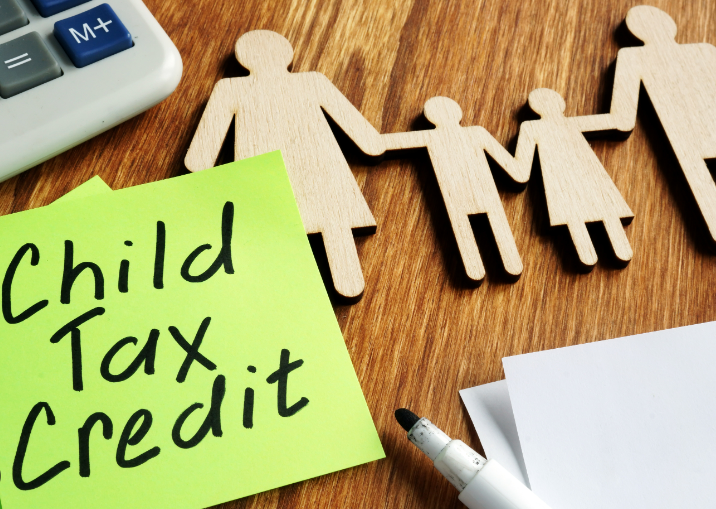
In 2023, millions of American families received a child tax credit payment, but the continuity of this payment in 2024 isn’t assured. Various proposals to modify the program are currently under consideration in Congress. President Biden’s $2 trillion Build Back Better social spending bill aimed to extend the Child Tax Credit through 2024 and introduce the following adjustments:
- Increasing the maximum credit households can claim to $3,600 per child aged five or younger and $3,000 per child aged six to 17.
- Making the credit fully refundable.
- Dispensing families’ eligible credit through monthly checks throughout 2024.
Whether these proposed changes come to fruition remains uncertain. Here’s the current status of the Child Tax Credit for 2024.
How The Child Tax Credit Works
The Child Tax Credit is an annual tax benefit accessible to taxpayers who have qualifying dependent children, subject to meeting eligibility requirements outlined in the U.S. tax code.
Qualified parents can receive a total payment of $5,000, split into two components. The first component, $3,600, constitutes the expanded child tax credit. The second component consists of a $1,400 stimulus payment for each dependent child. Some of these payments may be issued monthly through direct deposits from the government.
Who Qualifies For The Child Tax Credit?
To be eligible for the child tax credit, you must have provided support to the child for at least half of the preceding tax year. Additionally, the child must have resided with you for at least six months during that year.
However, the Child Tax Credit isn’t available to taxpayers at every income level. Single parents cannot claim it if their income exceeds $200,000. For those filing jointly with a spouse, the credit is not claimable if the combined income exceeds $400,000. Additionally, for new claims, you may need to provide proof that the child was born before the end of 2023.
Reverting To The Old Child Tax Credit
The Child Tax Credit for 2024 isn’t disappearing outright. However, if President Biden’s proposed adjustments as part of the Build Back Better plan aren’t approved by Congress, the program will return to its original iteration, which is notably less advantageous for American families.
Should the Child Tax Credit program revert to its previous guidelines, the following changes would occur:
- A $2,000 credit per dependent child under the age of 17.
- Income thresholds of $400,000 for married couples and $200,000 for all other filers (including single taxpayers and heads of households).
- A 70% partial refundability provision that impacts individuals whose tax liability is lower than the credit amount.
The Situation in Congress

Congress is currently engaged in deliberations over various provisions of the Build Back Better agenda. Among these discussions is the consideration of extending the $1,000 (or $1,600) supplemental amount tied to the Child Tax Credit, which was initially introduced in response to the pandemic. There’s also debate regarding the continuation of monthly advance payments to eligible families.
President Biden’s proposed alterations to the Child Tax Credit are integral components of his expansive Build Back Better social program. Although the legislation has successfully passed through the House of Representatives, its fate in the Senate appears uncertain without broader support. Many political analysts anticipate that the bill, in its current form, will ultimately meet opposition and fail to advance.
In the event that the Build Back Better bill fails to secure passage in the Senate, American families will revert to the less generous version of the Child Tax Credit. It remains possible that the proposed changes to the Child Tax Credit could still be enacted separately as standalone legislation. However, there’s a chance that these changes might not take effect in time to impact your tax return.
Impact On Taxes
When it comes to filing tax returns, eligible households will have the opportunity to claim the remaining half of the child tax credit when they file their taxes. However, the extent to which this expansion affects you largely depends on whether you chose to opt out of receiving the monthly advance credits and whether you qualified for the expanded credit based on your income.
For instance, if you received the monthly credit and were eligible for the full expansion, you may notice that the Child Tax Credit amount on your tax return is not as substantial. This discrepancy arises because you already received half of the amount in advance. If this concept of advance payments is new to you, allow us to elaborate.
Advance Payments
The Child Tax Credit implemented a novel component: advance payments. Taxpayers had the option to receive direct advance payments of their Child Tax Credits, amounting to either $250 or $300 per qualifying child, contingent upon their age. These payments were issued on a monthly basis.
The U.S. Treasury initiated the distribution of these payments. The advance payment initiative allowed eligible taxpayers to access their benefits during the tax year they would ultimately claim them, marking a completely unprecedented feature. For many parents, this supplementary financial assistance proved invaluable, providing immediate support for parenting expenses rather than having to wait until tax time to recoup these costs.
Overpaid Child Tax Credits
In contrast to stimulus checks, the Internal Revenue Service (IRS) will rectify any overpayments. This means that if your income improved in 2023 or if you claimed fewer dependents in the tax year than the IRS was aware of, you will need to reconcile any overpayments with your return.
Not all families qualified for the enhanced portion of the child tax credit. Single filers’ incomes couldn’t exceed $75,000, heads of households’ incomes were capped at $112,500, and married couples’ combined incomes couldn’t surpass $150,000 to be eligible for the additional amount. Beyond these thresholds, the tax break decreased by $50 for every $1,000 over the income limit.
Determining Eligibility

The IRS relied on the most up-to-date information at its disposal, likely sourced from your tax return, to assess your family’s eligibility. Nevertheless, some proactive families may have updated their income and family details through one of the agency’s online portals in advance.
According to tax professionals, the majority of families need not be concerned about repaying these payments, either from their tax refund or out of pocket. The Child Tax Credit features relatively high income thresholds for the $2,000 base amount, with a built-in buffer intentionally designed to mitigate such concerns.
What To Do Next
Individuals who received the Child Tax Credit can check their payment history on the IRS online portal to view the amount they’ve already received. It’s important to promptly submit your taxes to avoid potential delays.
It’s worth noting that the IRS will not issue refunds for the Child Tax Credit until at least mid-February. However, you can expedite your payments by taking two steps. Firstly, file your tax return electronically, as paper returns sent by mail take considerably longer to process. Secondly, ensure you have direct deposit payments set up with the IRS (or Federal Government). Following these guidelines should ensure that your Child Tax Credit funds are delivered to you in the shortest possible timeframe, typically within 21 days of filing.
In Conclusion
Following a temporary enhancement in recent years, the Child Tax Credit faces the possibility of reverting to its original form in 2024. This potential change could affect the amount of money eligible parents receive based on their income and could also impact the continuation of monthly installment payments in 2024.
Regardless of the outcome concerning the Child Tax Credit, individuals who received the benefit should ensure it is properly reported on their tax return. In the majority of cases, receiving the Child Tax Credit will not negatively impact a tax filing, and recipients are seldom required to repay it.
